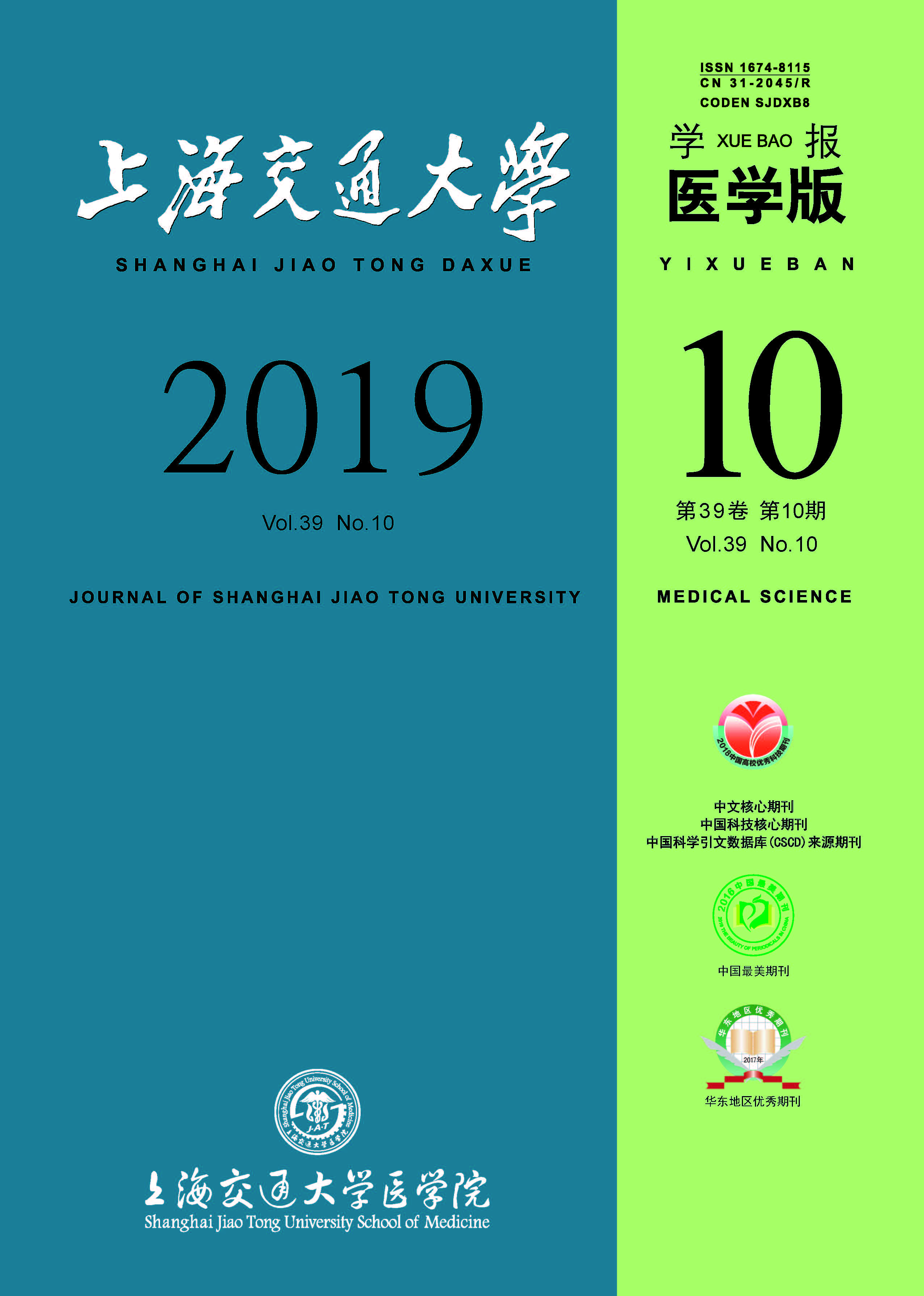|
|
Distribution characteristics of fragmented QRS in patients with coronary atherosclerotic heart disease and its relationship with left ventricular remodeling
SU Hai-xia, ZHU Ya-qin, ZHANG Tian-kuang, ZHANG Hui-li, GU Jun
2019, 39 (10):
1162.
doi: 10.3969/j.issn.1674-8115.2019.10.010
Objective · To explore the diagnostic value of fragmented QRS (fQRS) for coronary atherosclerotic heart disease (CHD), and to analyze its relationship with left ventricular remodeling. Methods · Nov. 2016 to Oct. 2018, 498 hospitalized patients in the Department of Cardiovascular Medicine of Shanghai Ninth Peoples Hospital, Shanghai Jiao Tong University School of Medicine were selected consecutively. During the hospitalization, all the patients underwent coronary angiography. According to the angiographic results, the patients were divided into the control group (203 patients with negative or coronary stenosis ≥75%). The incidences of fQRS(+) in the normal electrocardiogram among the three groups were comparedchi-square test of R×C contingency table. Two hundred and thirty patients with single-vessel stenosis≥30% were divided into the anterior descending branch group (128 cases), the right coronary branch group (59 cases), and the circumflex branch group (43 cases), and the relationship between fQRS(+) leads and diseased vessels was analyzednonparametric test. Finally, all the patients were divided into fQRS(+) group (86 cases) and fQRS(-) group (412 cases). The correlation between fQRS and left ventricular ejection fraction (LVEF), left ventricular end-diastolic volume (LVEDV), left ventricular end-systolic volume (LVESV), interventricular septum thickness (IVST) and left ventricular posterior wall thickness (LVPWT), respectively, were analyzedbinary Logistic regression model. Results · The chi-square test of R×C contingency showed that the incidences of fQRS(+) in the three groups were 8.89%, 16.13% and 30.71%, respectively, with statistically significant differences (all P Ⅱ, Ⅲ, AVF, V1, V2) were more common in the right coronary branch group, the fQRS(+) leads reflecting upper lateral wall (Ⅰ, AVL) were more common in the circumflex branch group, with statistically significant differences (all P0.05). Binary Logistic regression analysis showed that fQRS was negatively correlated with LVEF (r-0.030, OR0.971, 95% CI 0.945-0.997, P0.029), and positively correlated with LVESV (r0.042, OR1.043, 95% CI 1.005-1.082, P0.026). Conclusion · fQRS has certain reference value in the clinical diagnosis of CHD, and left ventricular remodeling may be one of the mechanisms of fQRS.
Related Articles |
Metrics
|

